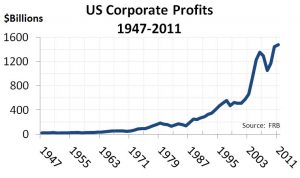We have all heard the allegations in the media of multi-national entities (MNE) diverting profits away from Australia to lower tax jurisdictions thereby reducing the global tax bill of such MNE’s. Entities such as Google and Apple have been at the forefront of allegations of improper use transfer pricing practices.
Entities can divert profits using a variety of means. The simplest way of doing this is to overstate the cost of imported products from an overseas MNE subsidiary thereby reducing the profits made by the MNE’s Australian subsidiary. This artificially increases the profits in the MNE supplier country which is in a lower tax regime than the Australian subsidiary thereby reducing the overall tax burden for the MNE. Other more complex methods are catching the ATO’s eye with two announcements last week by the ATO putting entities on notice who try to use a partnership structure to avoid the law, or who use circular financing arrangements to transfer income overseas but keep deductions in Australia.
Organisation of Economic Co-Operation and Development (OECD) Transfer Pricing Actions
The OECD’s Base Erosion and Profit Shifting (BEPS) action plan is the foundation of global transfer pricing practices and was released late 2015. It focuses on taxing profits where consumers live. This puts the OECD at odds with US MNE’s who assert that their global income is essentially American income derived by a US company and that it will decide if, how and when it will be taxed it, irrespective of the locations of end consumers.
Australian Actions on Transfer Pricing
The Australian Government has already enacted the Multinational Anti Avoidance Law (MAAL) to ensure that large multinational companies operating in Australia are subject to Australian tax laws. The larger MNE’s subject to these provisions have global revenue of $1billion+. In addition, the Government’s 2016 Budget introduced a new Diverted Profits Tax, a 40 per cent penalty rate of tax on large MNE’s that attempt to shift their Australian profits offshore to avoid paying tax. The combined MAAL and the Diverted Profits Tax are expected to raise around $650 million over four years.
For SME’s in Australia, the ATO has released ‘Simplifying Transfer Pricing Record Keeping’ for entities whose Australian income is below $25million. It doesn’t alleviate obligations under the legislation, but allows such entities to self-assess and simplify what would otherwise potentially be costly compliance requirements.
Documenting how costs and prices are determined as well as the decision making process followed in setting cross border pricing remains key. Benchmarking analysis and the arms-length principles remain best options for ensuring compliance.
The new transfer pricing regime remains largely untested in the courts, so please ensure you get good advice on the documentation requirements and methodology used in setting cross border prices if you operate within a structure whereby related entities are located both here and overseas and these entities transact with each other.
Ross – Billson Advisory







